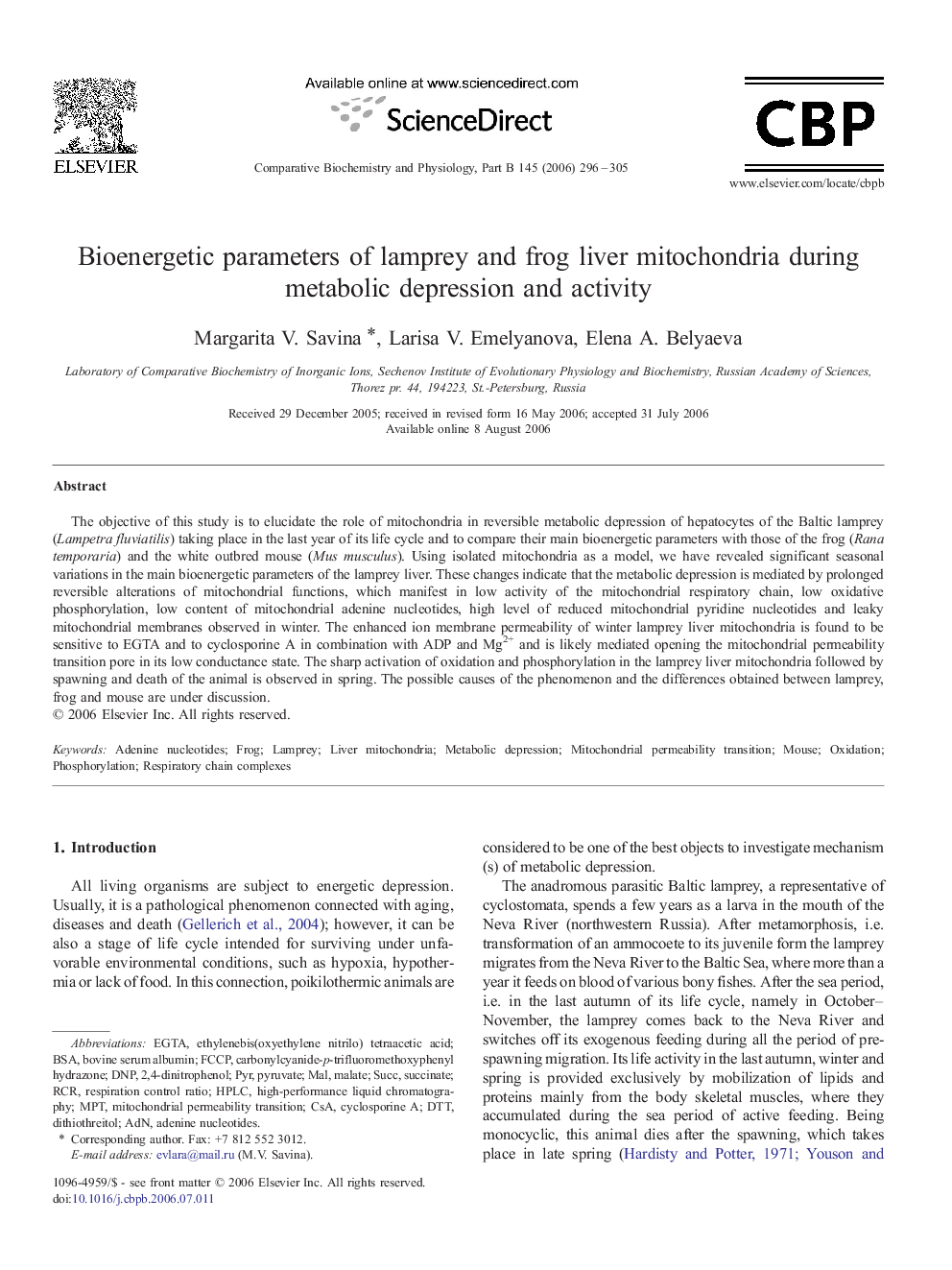| Article ID | Journal | Published Year | Pages | File Type |
|---|---|---|---|---|
| 1976856 | Comparative Biochemistry and Physiology Part B: Biochemistry and Molecular Biology | 2006 | 10 Pages |
Abstract
The objective of this study is to elucidate the role of mitochondria in reversible metabolic depression of hepatocytes of the Baltic lamprey (Lampetra fluviatilis) taking place in the last year of its life cycle and to compare their main bioenergetic parameters with those of the frog (Rana temporaria) and the white outbred mouse (Mus musculus). Using isolated mitochondria as a model, we have revealed significant seasonal variations in the main bioenergetic parameters of the lamprey liver. These changes indicate that the metabolic depression is mediated by prolonged reversible alterations of mitochondrial functions, which manifest in low activity of the mitochondrial respiratory chain, low oxidative phosphorylation, low content of mitochondrial adenine nucleotides, high level of reduced mitochondrial pyridine nucleotides and leaky mitochondrial membranes observed in winter. The enhanced ion membrane permeability of winter lamprey liver mitochondria is found to be sensitive to EGTA and to cyclosporine A in combination with ADP and Mg2+ and is likely mediated opening the mitochondrial permeability transition pore in its low conductance state. The sharp activation of oxidation and phosphorylation in the lamprey liver mitochondria followed by spawning and death of the animal is observed in spring. The possible causes of the phenomenon and the differences obtained between lamprey, frog and mouse are under discussion.
Keywords
Related Topics
Life Sciences
Biochemistry, Genetics and Molecular Biology
Biochemistry
Authors
Margarita V. Savina, Larisa V. Emelyanova, Elena A. Belyaeva,
